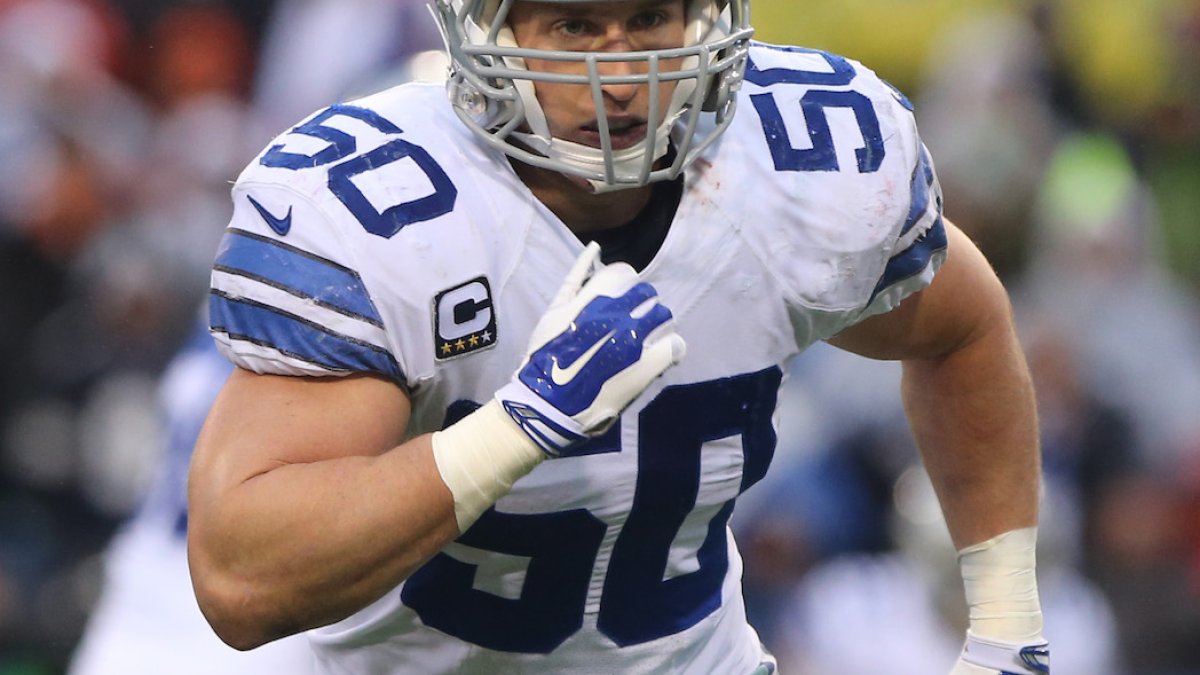If you paid attention to the NFL at all last fall you know how good the Cowboys run game was. What you might not have realized though, was how good their run defense was in 2016. While they didn’t actually lead the league in rushing, they led the league in rushing defense, allowing a paltry 83.5 yards per game. Now some of that was due to the fact that their opponents had to play catchup a lot of the time, but their 3.9 yards per carry against was still the eighth best figure in the league.
The most impressive part of it all, though, is the personnel they do it with along the defensive line. There’s no big names. There’s no big money. Heck, because they don’t utilize a true nose tackle there’s no real big men even. What they do have is one of the best defensive coordinators in the NFL. Rod Marinelli has been coaching defense in the league for 20 years now and at every stop he’s been he’s employed an aggressive one gapping defense.
Many run defenses around the league preach gap integrity as a means to be effective. If you have every gap covered, and each defender manages to stay in their gap, theoretically there will be no lane to run. Marinelli’s defenses take a different approach. While executing assignments is still important, gap integrity takes a backseat to penetration. Marinelli wants the defensive line to create as much disruption as possible even if the linemen aren’t necessarily finishing the plays themselves.
There are number of ways schematically in which Dallas gets this done. The first is via slanting the defensive line. This creates all sorts of problems for an offensive line. On most zone runs it will require adjacent offensive linemen to pass off their player. On gap runs it means that the offensive lineman has to react quickly and not overreach from the snap. It also helps in giving the linebackers behind them more defined reads as they’ll almost always flow the opposite way from the slant. You can see this in the play below as the whole left side of the defensive line slants inside and the linebackers replace outside.
So much of it is schematic. They stunt/slant and attack upfield as much as any NFL defense I've seen pic.twitter.com/hSXYNLOCCT
— Mike Renner (@PFF_Mike) June 21, 2017
Another way in which the Cowboys scheme disruption is by stunting defensive linemen. This is in a similar vein to slants, but instead of the entire line, it’s just two adjacent linemen going opposite ways. It’s a dangerous game to play, and for that reason is used more sparingly or is executed on a post snap read on runs like power. The final way isn’t necessarily schematic, but rather a coaching point. You’ll hear of defensive coordinators that will give a superstar free reign to make plays as they see fit. Well Marinelli seemingly affords that luxury to every player on the Dallas front. Whether it’s the linebackers or linemen, Marinelli trusts their ability to read the steps of offensive linemen and then attack with reckless abandon. Nowhere is this more evident than on wide runs. As soon as a Cowboys defensive lineman sees the quick lateral steps of an offensive lineman, they shoot through into backfield.
Didn't realize until recently that the Cowboys led league in rushing defense last season. They create so much havoc with that DLine pic.twitter.com/q5YPPCT9k4 — Mike Renner (@PFF_Mike) June 21, 2017
The result is an absolute mess of a read for the running back and a bunch of screwed up angles for the linemen trying to locate linebackers at the second level. This coaching point is one of the big reasons that opposing teams averaged only 3.3 yards per carry on outside zone runs against the Cowboys last year (94 attempts).
Dallas wouldn’t be able to attack like that though without the one piece of the puzzle we haven’t talked about yet. Linebacker Sean Lee’s ability to read the linemen in front of him and know where the running back has to go is as good as it gets outside of Luke Kuechly in the NFL. When you have a defensive line playing as recklessly as the Cowboys, it can leave huge running lanes if someone gets washed out of the play. Then it’s on the linebackers to clean it up. Take the play below where the right defensive end gets reached.
Not sure it would work though without Sean Lee. He plays downhill as well as any LB in league pic.twitter.com/MlP9zxKdiJ
— Mike Renner (@PFF_Mike) June 21, 2017
Lee reads it immediately and makes the running back's read before the running back even does. Lee makes a living getting to a spot before an offensive lineman can even get their hands on him. It’s a big part of the reason why he had the third best run stop percentage of any linebacker in the league a season ago. At a position that seems to be decreasing in value around the league at the moment, this defense wouldn’t work without him.
For Dallas, this is all a calculated measure. They want to make tackles for loss that scare opposing teams from running the ball so that they are the ones that control the clock. Marinelli is content giving up a handful of chunk plays on the ground rather than consistently yielding three yards a pop. Of the 340 rushing attempts against Dallas last year, almost a quarter of them went for no gain or a loss. That type of aggressiveness scares offensive coordinators into passing more as there is no sense handing it off if it’s not going to get your offense into more favorable down and distances 25 percent of the time. That’s why Dallas is your Teaching Tape for an aggressive, one-gap run defense in today’s NFL.



 © 2024 PFF - all rights reserved.
© 2024 PFF - all rights reserved.